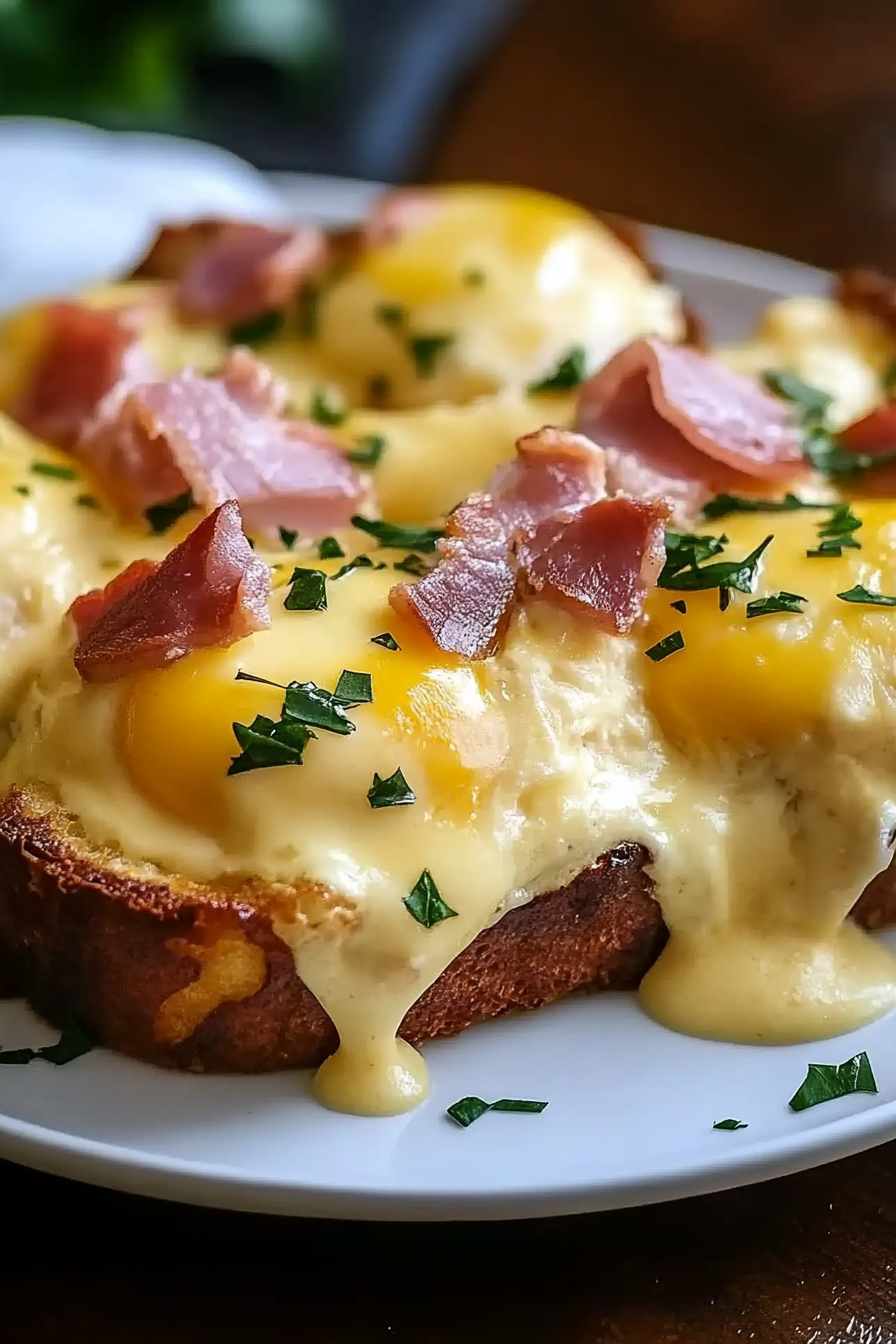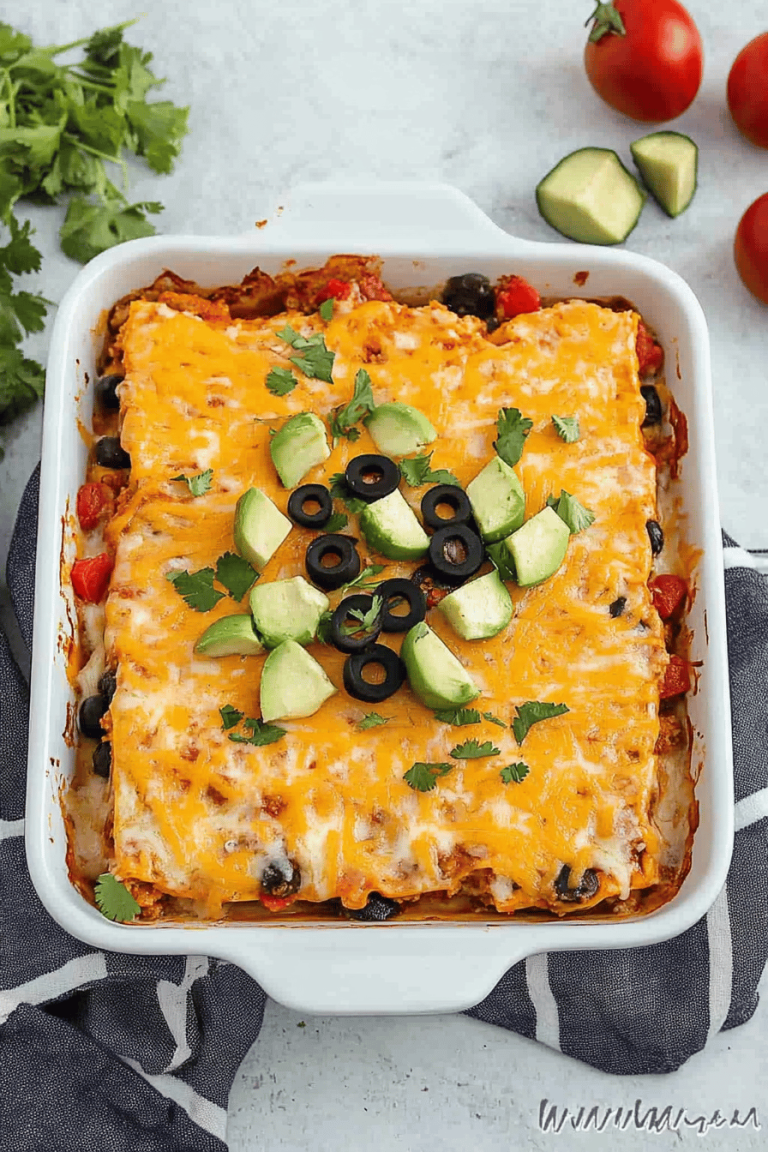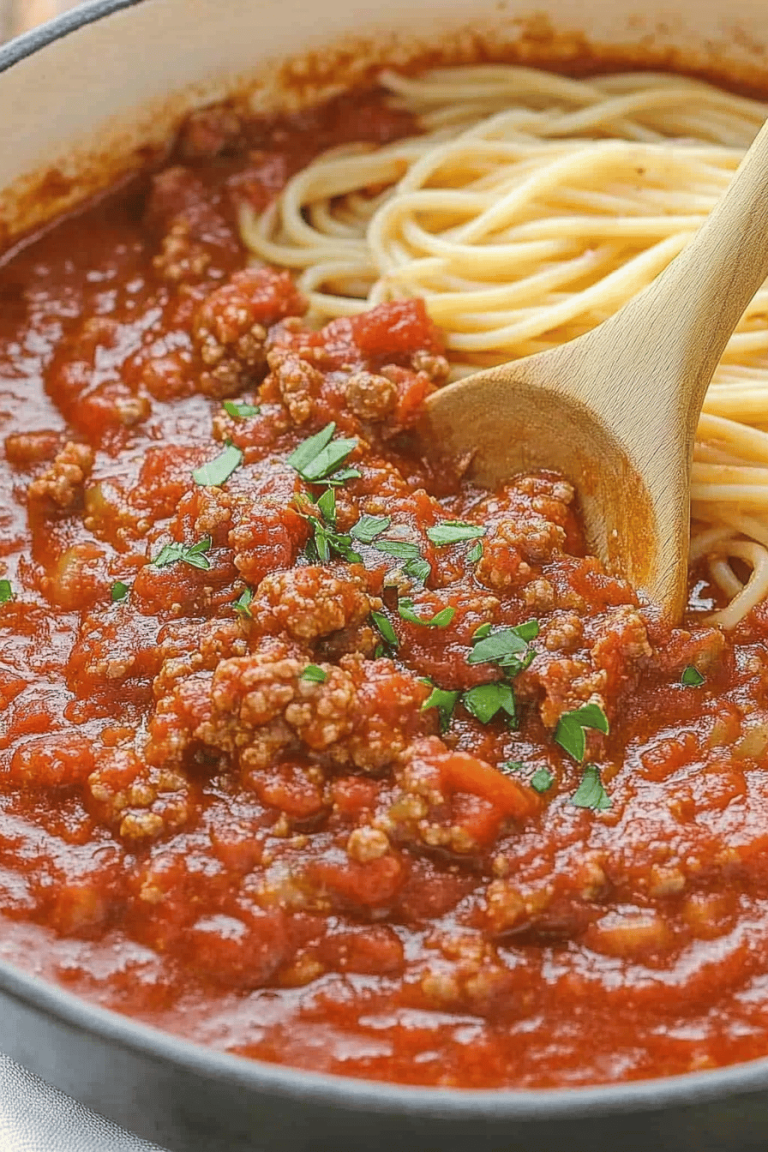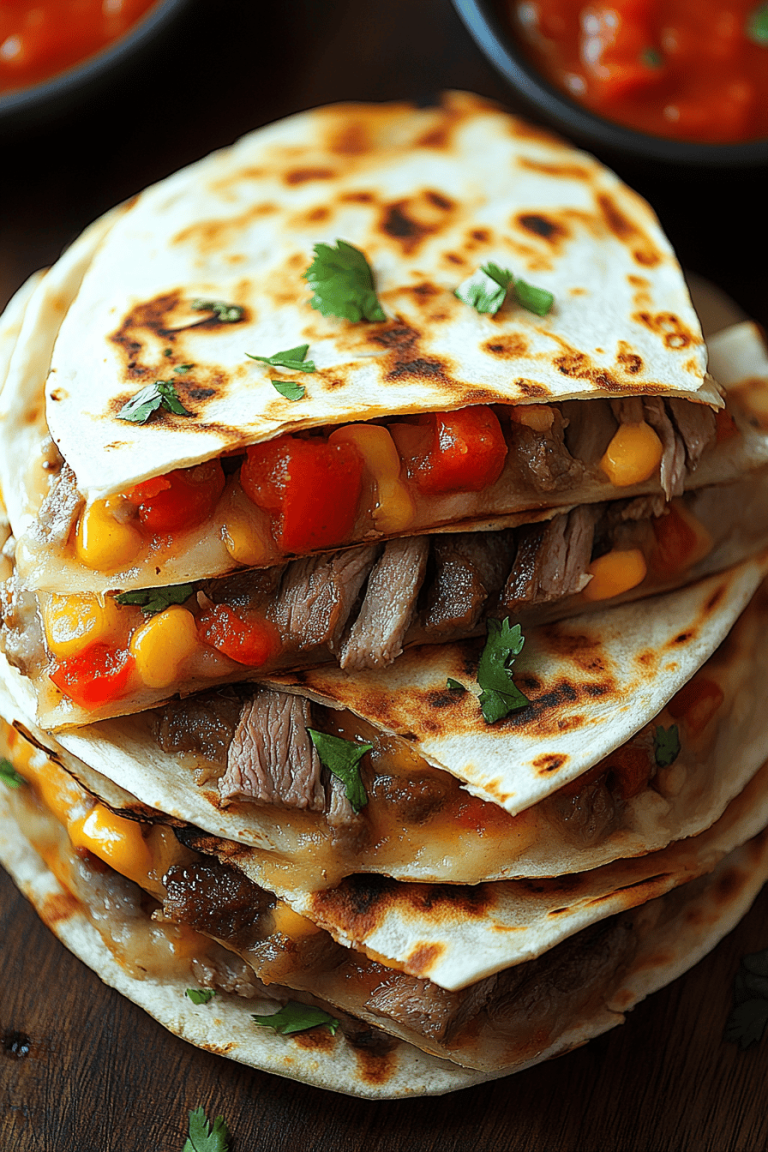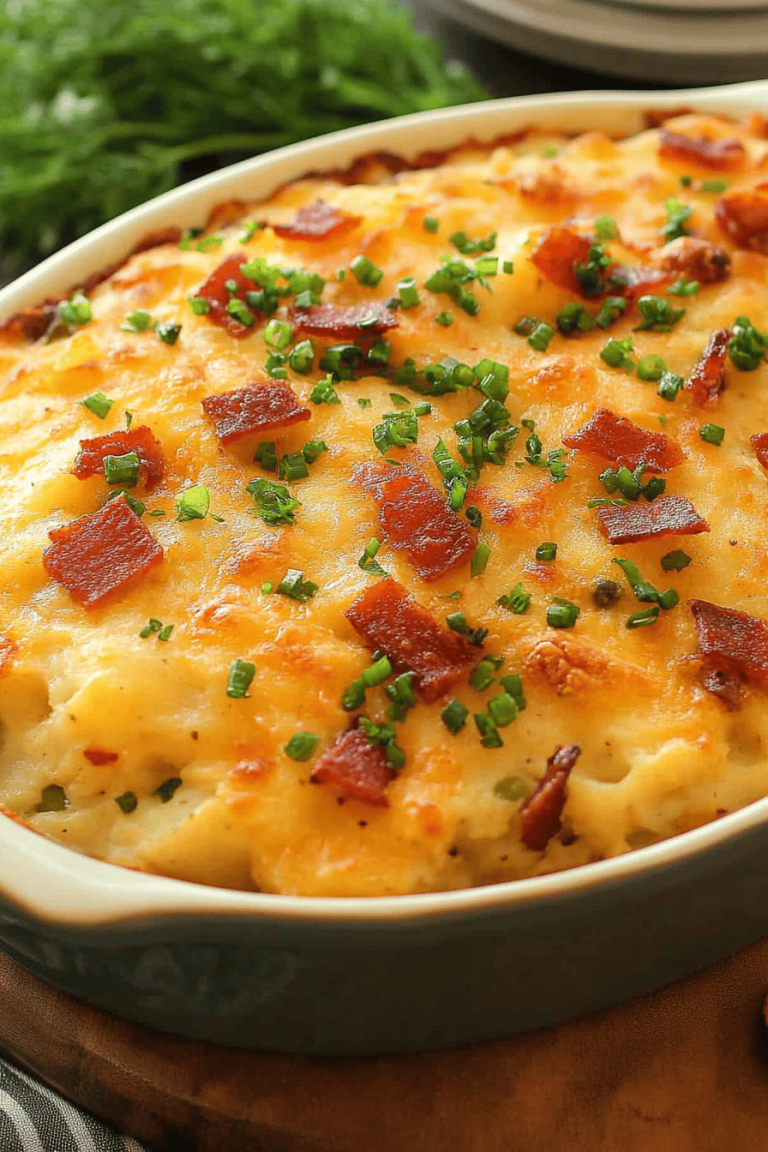You know those mornings? The ones where you wake up with a serious craving for something decadent, something that feels like a special occasion, but the thought of standing over a hot stove, perfectly poaching eggs and whisking hollandaise from scratch, feels utterly overwhelming? Yeah, I’ve been there more times than I can count. And usually, on those mornings, I’d end up settling for cereal or toast. But then, a few years ago, I stumbled upon a little secret weapon that changed everything: Eggs Benedict Casserole. Forget everything you think you know about complicated brunch dishes. This is your new best friend. It takes all the iconic, beloved flavors of Eggs Benedict – the rich, creamy hollandaise, the savory ham, the perfectly cooked eggs, all atop a tender base – and transforms it into a make-ahead, bake-at-your-leisure masterpiece. Seriously, it’s a game-changer for busy weekends, holidays, or even just a Tuesday when you deserve a little extra love. It’s not quite a traditional quiche, and it’s definitely not just scrambled eggs, but it captures that same comforting, satisfying essence in a way that’s honestly addictive.
What is Eggs Benedict casserole?
So, what exactly *is* this magical thing called Eggs Benedict Casserole? Think of it as the ultimate deconstructed and then perfectly reassembled version of your favorite brunch classic. Instead of layering individual English muffin halves, Canadian bacon, and eggs, then topping them with hollandaise, we’re bringing it all together in one glorious baking dish. The base is typically a tender, custardy mixture, often made with bread or even a sort of savory muffin batter, studded with chunks of savory ham (or sometimes bacon, if you’re feeling adventurous!). On top, we nestle in whole or halved eggs, which then bake right into the creamy custard. And the pièce de résistance? A luscious, lemony hollandaise sauce that gets drizzled over the top *after* it’s baked, or sometimes gently swirled in before baking for an even richer, more integrated flavor. It’s essentially all the best parts of Eggs Benedict, condensed into a bakeable format that feeds a crowd (or just you, over several days – no judgment here!). It’s familiar, comforting, and yet, somehow, completely new and exciting.
Why you’ll love this recipe?
Honestly, there are so many reasons why this Eggs Benedict Casserole has become a staple in my kitchen. First and foremost, the flavor is just out of this world. You get that classic savory ham, the rich, eggy custard, and then that bright, tangy hollandaise sauce that just ties it all together. It’s pure comfort food bliss. But what I really, *really* love about it is the simplicity. Gone are the days of stressfully poaching eggs! Here, the eggs bake right into the casserole, ensuring they’re perfectly cooked and jammy every single time. And the make-ahead potential? It’s a lifesaver! You can assemble the entire thing the night before, pop it in the fridge, and then just bake it off in the morning. Imagine waking up on a lazy Sunday and having this incredible brunch ready with minimal effort. It’s also surprisingly budget-friendly compared to ordering Eggs Benedict out. You can often use ingredients you already have on hand, like day-old bread. Plus, it’s incredibly versatile. Not a fan of Canadian bacon? Swap it for regular bacon or even some sautéed mushrooms and spinach for a vegetarian twist. I’ve even experimented with adding a little smoked salmon, and let me tell you, it was divine. While it shares some DNA with a classic strata or a breakfast casserole, the addition of that signature hollandaise really elevates it to something truly special. It’s the perfect dish when you want to impress without the fuss, or when you’re just craving that indulgent Eggs Benedict flavor profile in a more relaxed, approachable way.
How do I make a Benedict casserole?
Quick Overview
The magic of this Eggs Benedict Casserole lies in its straightforward assembly. You’ll essentially create a rich, savory base, nestle in your eggs, and then bake it until golden and bubbly. The hollandaise is the finishing touch that brings it all home. The beauty of this recipe is that you can mix and match elements – some people prefer to swirl the hollandaise in before baking for maximum creaminess, while others love drizzling it over a freshly baked, slightly cooled casserole for that glossy, luxurious finish. Whichever way you choose, it’s incredibly forgiving and always turns out wonderfully. You can even prepare most of it the night before, making your morning an absolute breeze.
Ingredients
For the Main Batter:
You’ll need about 8-10 cups of cubed day-old bread. Sourdough or challah work beautifully here because they have a nice structure and soak up the custard without becoming too mushy. If your bread is fresh, you can lightly toast it in the oven. I also like to add about 1 ½ cups of diced cooked ham or Canadian bacon. If you can find good quality Canadian bacon, go for it! For the wet ingredients, we’ll use 6 large eggs, whisked until frothy, and about 3 cups of milk – whole milk gives the richest result, but I’ve successfully used 2% and even a bit of half-and-half for extra creaminess. A little Dijon mustard, about 1 tablespoon, adds a subtle tang that cuts through the richness. And of course, salt and pepper to taste.
For the Filling:
This is where we get those signature eggs Benedict vibes. You’ll need 6-8 large eggs, depending on how eggy you like your casserole. The key here is to gently crack them into little wells you make in the main batter just before baking. This way, they cook directly into the casserole, creating beautiful, jammy yolks. Some people like to use Hard-Boiled Eggs, but I find the soft-baked yolk is essential for that authentic Eggs Benedict experience. And for that savory bite, about 8 ounces of diced cooked ham or Canadian bacon is perfect. You can even use crispy cooked bacon bits if you prefer. I sometimes add a handful of shredded Gruyere or Swiss cheese to the batter for an extra layer of cheesy goodness, but that’s totally optional!
For the Glaze:
Ah, the hollandaise! This is what elevates it from a Breakfast Casserole to an *Eggs Benedict* Casserole. You’ll need 3 large egg yolks, about ½ cup (1 stick) unsalted butter, melted and clarified (this means heating it until the milk solids separate and you can skim them off – it makes the hollandaise more stable), the juice of half a lemon, and a pinch of cayenne pepper for a tiny bit of warmth. Some people add a splash of white wine or a little water to thin it out if it gets too thick. The key is to get that beautiful, emulsified, lemony sauce.
Step-by-Step Instructions
Step 1: Preheat & Prep Pan
First things first, get your oven preheated to 350°F (175°C). Grab a 9×13 inch baking dish. I like to give it a good grease with butter or cooking spray, just to make sure nothing sticks. This is a step I *never* skip, especially if I’m making it ahead of time. It ensures a clean release and presentation.
Step 2: Mix Dry Ingredients
In a large bowl, combine your cubed bread and the diced ham or Canadian bacon. If you’re adding cheese, now’s the time to toss it in and give everything a good mix so the ham and bread are evenly distributed. I usually give it a gentle toss with my hands to make sure all the bread cubes get coated later.
Step 3: Mix Wet Ingredients
In a separate medium bowl, whisk together the 6 large eggs for the base. Add your milk, Dijon mustard, salt, and pepper. Whisk it all until it’s well combined and slightly frothy. This mixture will act as the custard that binds everything together.
Step 4: Combine
Now, pour the wet ingredients over the bread and ham mixture. Gently fold everything together with a spatula until all the bread cubes are moistened. Be careful not to overmix or mash the bread too much; you want some texture. Let it sit for about 10-15 minutes, allowing the bread to soak up the liquid. This resting period is crucial for a tender casserole.
Step 5: Prepare Filling
While the bread is soaking, get your 6-8 extra eggs ready. You’ll need to gently make little wells or indentations in the bread mixture in your baking dish. You can use the back of a spoon or even your fingers. Make sure the wells are big enough to comfortably hold an egg. Carefully crack one egg into each well. I usually do this right before it goes into the oven to keep the yolks as intact as possible.
Step 6: Layer & Swirl
Pour the soaked bread mixture into your prepared baking dish, spreading it out evenly. Then, carefully crack one egg into each of the wells you made. If you’re swirling in some hollandaise before baking (which makes it extra creamy!), you’d gently drizzle about half of your prepared hollandaise over the top of the bread mixture *before* adding the eggs. Then, you can use a toothpick or the tip of a knife to create gentle swirls. But honestly, I often save the hollandaise for drizzling on top after baking – it’s a bit cleaner and you can really control the amount.
Step 7: Bake
Pop the baking dish into your preheated oven. Bake for 40-50 minutes, or until the casserole is golden brown around the edges and the eggs are set. The yolks should still be a little jammy; they’ll continue to cook a bit as the casserole rests. If the top starts to brown too quickly, you can loosely tent it with foil. A knife inserted into the custard should come out mostly clean, with just a little bit of moisture.
Step 8: Cool & Glaze
Once it’s out of the oven, let the casserole rest for about 10-15 minutes. This is super important! It allows the custard to set up properly and makes it easier to slice. While it’s resting, prepare your hollandaise sauce. Whisk the egg yolks and lemon juice in a heatproof bowl set over a saucepan of simmering water (a double boiler). Gradually whisk in the melted, clarified butter, a little at a time, until the sauce is thick and emulsified. Season with salt and cayenne pepper. If it gets too thick, whisk in a tiny bit of warm water.
Step 9: Slice & Serve
Cut the casserole into generous squares. Drizzle generously with the warm hollandaise sauce. The warm, tangy sauce over the rich, eggy casserole is just heavenly. Serve immediately and watch it disappear!
What to Serve It With
This Eggs Benedict Casserole is so wonderfully versatile, it can truly fit into any mealtime. For a classic breakfast, a simple cup of good quality black coffee is the perfect companion, allowing the rich flavors of the casserole to shine. If you’re serving it for a more leisurely brunch, I love to pair it with a refreshing mimosa or a sparkling rosé. The bubbles cut through the richness beautifully. For an elegant touch, serve it with a side of fresh fruit salad – think berries, melon, and perhaps some citrus segments. It adds a burst of freshness and color to the plate. If you’re looking for a more substantial brunch, consider serving it alongside some crispy home fries or roasted breakfast potatoes. For a truly decadent dessert option (yes, you can totally have this for dessert if you’re feeling it!), skip the hollandaise and try a dusting of powdered sugar and a side of fresh raspberries with a dollop of whipped cream – it becomes a sort of bread pudding hybrid that’s surprisingly delicious. My family often requests this on holidays, and we’ll serve it with a side of roasted asparagus or a light green salad to balance things out. It’s also fantastic as a cozy snack on a rainy afternoon, perhaps with just a tiny drizzle of hollandaise or even a sprinkle of chives.
Top Tips for Perfecting Your Eggs Benedict Casserole
I’ve made this dish more times than I can count, and over the years, I’ve picked up a few tricks that make all the difference. First, when it comes to the bread, make sure it’s truly day-old or even a bit stale. Fresh bread tends to absorb liquid too quickly and can result in a mushy casserole. Toasting it lightly in the oven for about 10 minutes at 300°F (150°C) can also help if your bread is fresher than you’d like. For the custard, don’t be afraid to whisk those eggs really well with the milk; it helps create a smoother, more uniform texture in the final casserole. When you’re making the wells for the eggs, don’t go too deep, or the yolks might cook unevenly. Just deep enough so the egg is nestled in but still has some exposure to the heat. For the hollandaise, clarity is key! Clarifying your butter removes the milk solids that can burn, giving you a smoother, richer, and more stable sauce. If your hollandaise splits, don’t panic! You can often rescue it by whisking in a tablespoon of hot water or another egg yolk in a separate bowl. I learned that lesson the hard way years ago! When it comes to baking, every oven is different. Keep an eye on it towards the end. You’re looking for the edges to be set and golden, and the center to be just firm. The yolks will continue to cook as it rests. If you’re making this ahead, assemble everything up to the point of adding the raw eggs, cover it tightly with plastic wrap, and refrigerate. Add the eggs just before baking. For ingredient swaps, if you don’t have Canadian bacon, crispy cooked bacon is a fantastic alternative. Diced ham works beautifully too. For a vegetarian option, sautéed mushrooms and spinach are wonderful. I’ve even tried adding a little chopped jalapeño to the batter for a spicy kick, and it was surprisingly good! The glaze is really the star, but if you’re really short on time or don’t want to make hollandaise, a good quality béchamel sauce drizzled over the top can be a decent substitute, though it won’t have that signature lemony tang.
Storing and Reheating Tips
One of the best things about this Eggs Benedict Casserole is how well it stores and reheats, making it perfect for meal prep. If you have leftovers (which, let’s be honest, doesn’t happen often in my house!), you can store them in an airtight container in the refrigerator for up to 3 days. It’s best to store any leftover hollandaise sauce separately. The casserole holds up beautifully, and the flavors actually meld together even more overnight. For reheating, the best method is to warm individual portions in the oven or a toaster oven. Place a slice on a baking sheet and warm at 350°F (175°C) for about 10-15 minutes, or until heated through. Microwaving is also an option for a quicker reheat, but it can sometimes make the texture a bit softer. If reheating from the refrigerator, the eggs within the casserole will be fully cooked and firm. If you want to achieve that jammy yolk effect again after reheating, you’ll have to be careful not to overdo it, or you might end up with fully cooked yolks. I usually aim for just warm enough to melt the interior. If you’ve made the casserole and haven’t baked it yet, it will keep covered in the refrigerator for up to 24 hours. Just add the raw eggs and bake as usual, adding a few extra minutes to the baking time if it’s very cold from the fridge. Freezing this casserole can be a bit trickier, especially with the raw eggs. It’s generally best to bake it first, then let it cool completely, slice it, and wrap individual portions tightly in plastic wrap and then in foil before freezing. It can be frozen for up to 2 months. To thaw, transfer it to the refrigerator overnight and then reheat as described above. For the hollandaise, it’s really best made fresh, but if you have a small amount left, it will keep covered in the fridge for about a day. Gently reheat it over very low heat, whisking constantly, or in short bursts in the microwave, adding a tiny bit of warm water or lemon juice if it thickens too much.
Frequently Asked Questions
Final Thoughts
So there you have it – my go-to recipe for an absolutely divine Eggs Benedict Casserole. It’s honestly one of those recipes that makes me feel like a culinary superhero without actually requiring superhero-level skills. It’s got all the rich, comforting flavors of the classic dish, but with a fraction of the fuss. I love that I can whip it up the night before and then have a truly special brunch ready with minimal morning effort. It’s perfect for those slow weekend mornings, holiday gatherings, or anytime you just want to treat yourself (and your loved ones!) to something incredibly delicious. If you’re a fan of classic Eggs Benedict, I promise you’re going to adore this baked version. Give it a try, and let me know what you think! I can’t wait to hear about your creations and any fun twists you might add. Happy baking, and more importantly, happy eating!

Eggs Benedict Casserole
Ingredients
Main Ingredients
- 1 pound Breakfast Sausage crumbled
- 8 large Eggs
- 1 can Biscuits refrigerated, cut into 1-inch pieces
- 2 cups Shredded Cheese cheddar or Monterey Jack
Hollandaise Sauce
- 0.5 cup Butter melted
- 3 large Egg Yolks
- 1 tablespoon Lemon Juice
- 0.25 teaspoon Salt
- 0.125 teaspoon Cayenne Pepper optional
Instructions
Preparation Steps
- Preheat oven to 375°F (190°C). Grease a 9x13 inch baking dish.
- In a skillet, cook the breakfast sausage until browned. Drain off any excess grease.1 pound Breakfast Sausage
- Spread the cooked sausage evenly in the bottom of the prepared baking dish.1 pound Breakfast Sausage
- Layer the biscuit pieces over the sausage.1 pound Breakfast Sausage
- In a separate bowl, whisk together the eggs, shredded cheese, salt, and cayenne pepper (if using).1 pound Breakfast Sausage
- Pour the egg mixture evenly over the biscuits and sausage.
- Bake for 30-40 minutes, or until the eggs are set and the casserole is golden brown.
- While the casserole is baking, prepare the Hollandaise sauce: In a small saucepan over low heat, whisk together the egg yolks, lemon juice, and melted butter until thickened and smooth. Stir in salt and cayenne pepper.1 pound Breakfast Sausage
- Let the casserole rest for 5 minutes before serving. Drizzle with Hollandaise sauce.

